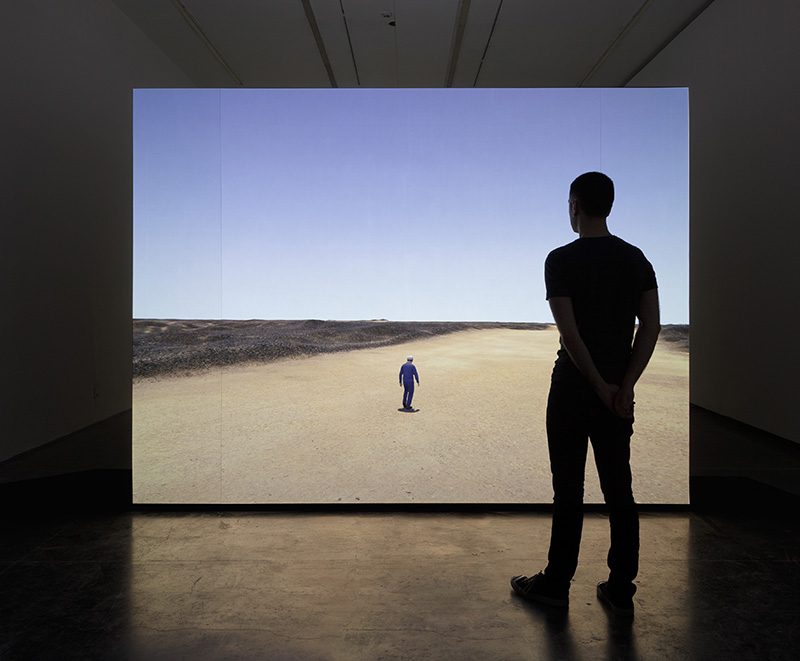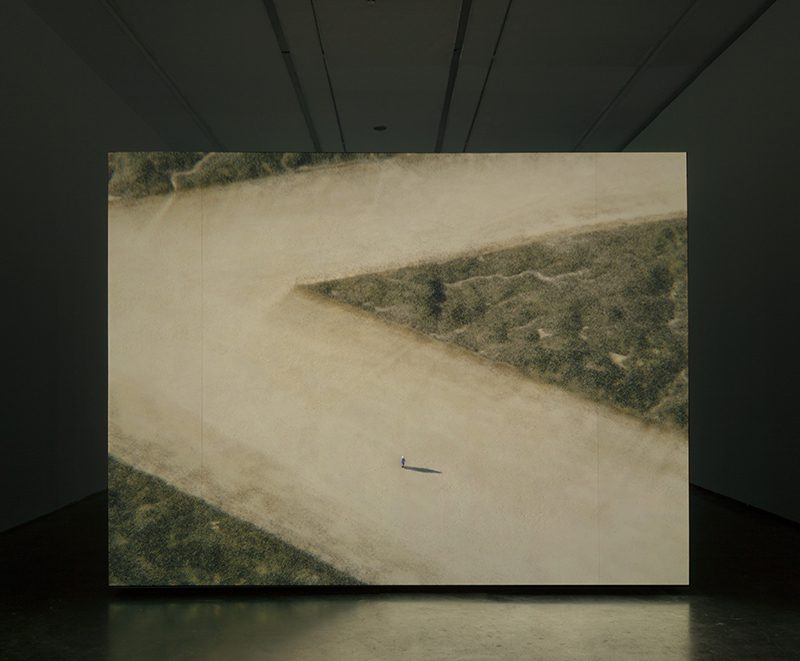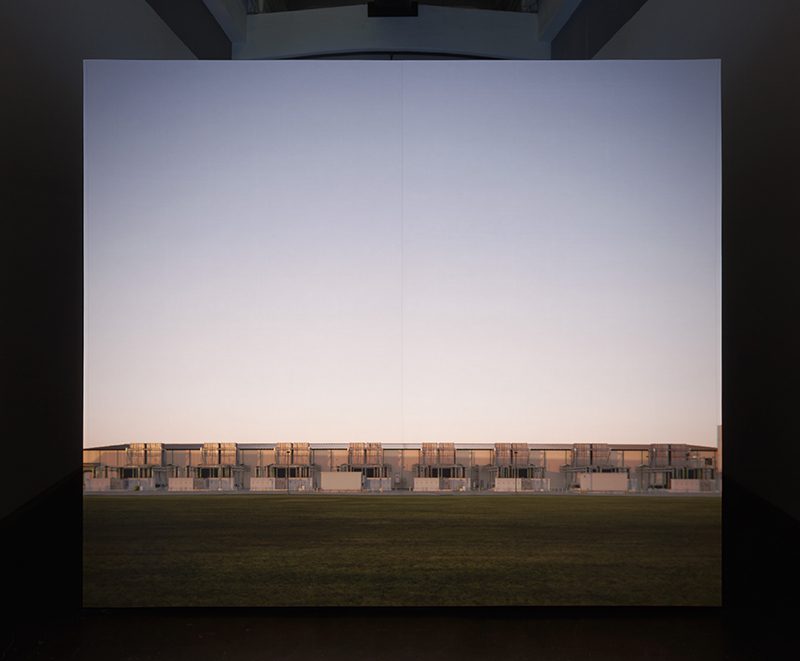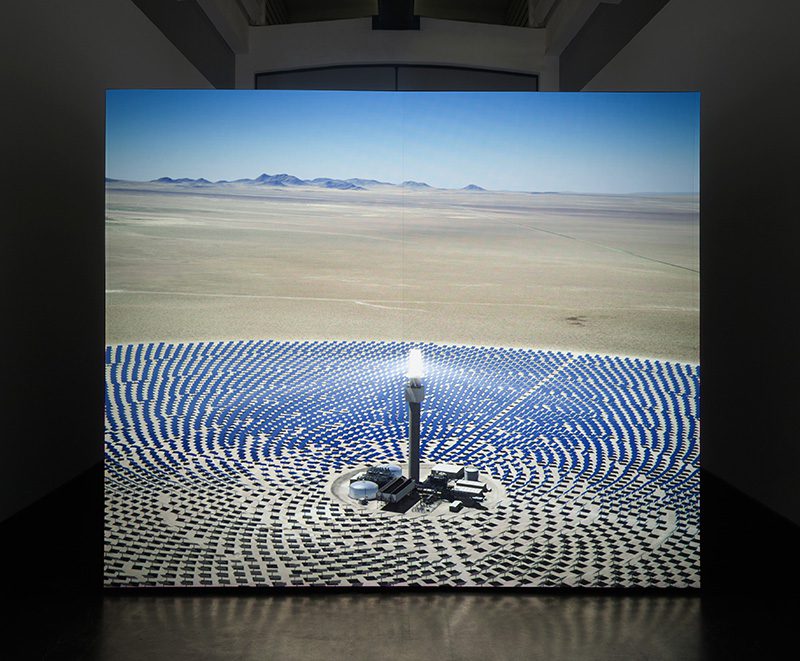ART-PRESENTATION: John Gerrard-Power.Play
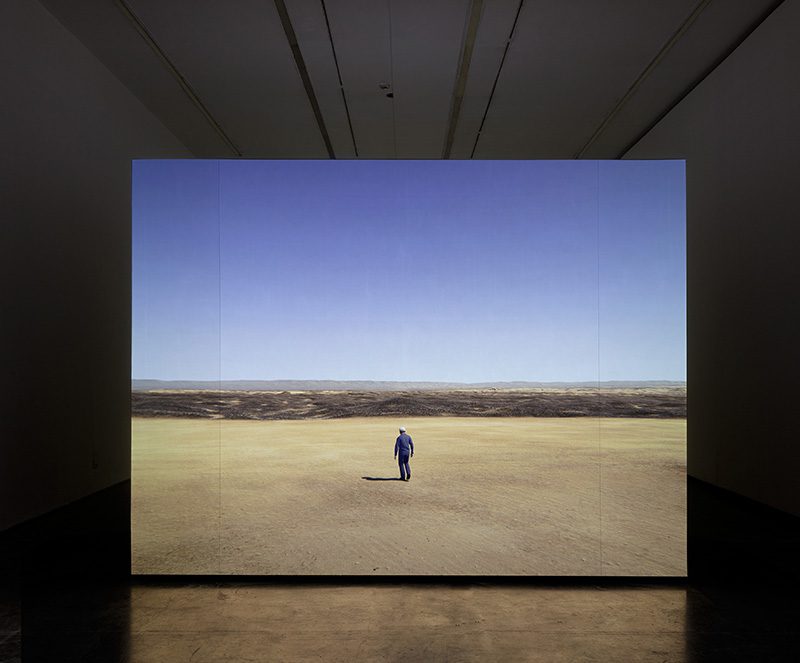 Gerrard’s works are constructed as simulations or virtual worlds, using 3D Real-time computer graphics. Although making use of advanced digital technology, Gerrard’s work has been noted for its resistance to being categorised as new media art. Gerrard himself regards realtime 3D as “A post-cinematic medium in which one can manipulate and interact with time in new ways”.
Gerrard’s works are constructed as simulations or virtual worlds, using 3D Real-time computer graphics. Although making use of advanced digital technology, Gerrard’s work has been noted for its resistance to being categorised as new media art. Gerrard himself regards realtime 3D as “A post-cinematic medium in which one can manipulate and interact with time in new ways”.
By Efi Michalarou
Photo: UCCA Archive
In “Power. Play”, John Gerrard’s first solo exhibition in China that is on presentation at Ullens Center for Contemporary Art (UCCA), the artist presents three major works: “Solar Reserve (Tonopah, Nevada)” 2014, “Farm (Pryor Creek, Oklahoma)” 2015, and “Exercise (Dunhuang)” 2014, together the works raise important questions not only about key issues of the present historical moment such as power and surveillance, but about the very nature of the work of art in the digital age. “Solar Reserve (Tonopah, Nevada)” 2014, is a computer simulation of an actual power plant known as a solar thermal power tower, in the Mojave Desert, surrounded by 10,000 mirrors that reflect sunlight upon it to heat molten salts, forming a thermal battery which is used to generate electricity. Over the course of a 365-day year, the work simulates the actual movements of the sun, moon, and stars across the sky, as they would appear at the Nevada site, with the thousands of mirrors adjusting their positions in real time according to the position of the sun. John Gerrard’s requests for access to sites, however, are not always met with welcome. Such was the case for ”Farm (Pryor Creek, Oklahoma)” 2015. Rebuffed by Google, Gerrard hired a helicopter to assist in the production of a covert photographic survey of one of the company’s server centers, or “data farms”, in Oklahoma. While this process is not considered a part of the final work, it illustrates the guerilla-style production tactics the artist feels are necessary in approaching topographically extreme sites. Extending Gerrard’s “Grow Finish Unit” series, which focuses on architecturally similar, computer-controlled pork production units in the American Midwest, “Farm (Pryor Creek, Oklahoma)” 2015 is a synecdoche of the information systems and power structures that organize the resources enabling it, eerily reminding viewers of the direct influence digital space carries over the real landscape. “Exercise (Dunhuang)” 2014 began when a friend informed Gerrard of a mysterious network of roadways the size of a small town in the heart of the Gobi Desert. After visiting the site in person, Gerrard digitally reconstructed it using satellite depth-scans of the markings. To add another layer, Gerrard has placed avatars based on motion scans of 39 workers from a Guangzhou computer manufacturing plant, wearing blue uniforms and paper bonnets, into the simulation, their movements as they wander through the vast network mirroring those of the actual workers. The players’ paths across what can be read as a game board, landscape, or gigantic stage are determined by the A* algorithm used in GPS route-finding systems. The entire performance, play, competition, or exercise is depicted by three different virtual cameras: from human head height, from the point of view of a circling low-flying drone, and from a satellite’s vertical perspective.
Info: Curator: Philip Tinari, Assistant Curator: Guo Xi, Ullens Center for Contemporary Art (UCCA), 798 Art District, No. 4 Jiuxianqiao Lu, Chaoyang District, Beijing, Duration: 9/6-7/8/16, Days & Hours: Mon-Sun 10:00-19:00, http://ucca.org.cn
